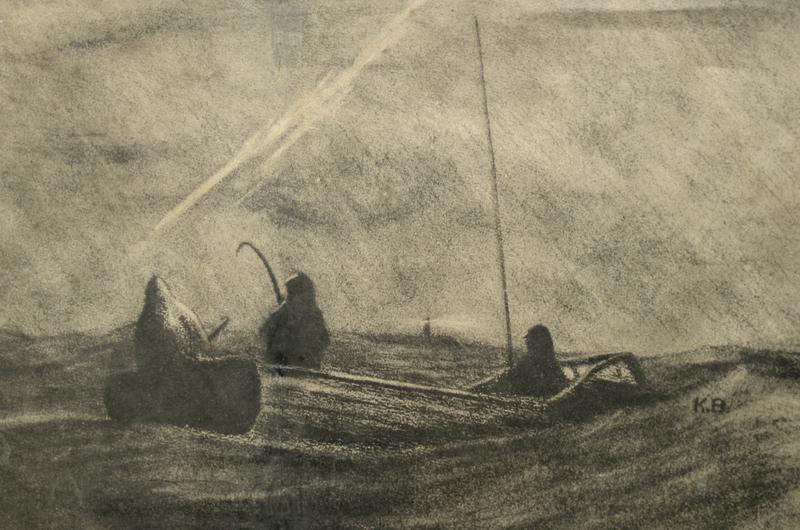The tide was just starting to flow east when Stuart Hunter and I skidded my nine-foot tin boat down the cliff at Pilots Landing and rowed toward Wash Rock, where terns were working over breaking bass. We dropped anchor up-current, the hook held and we were in business, casting metal into the action from our miniature craft.
We were at the inshore edge of the rock-studded shoal known as Devil’s Bridge that extends northwest nearly a mile off the Gay Head Cliffs and has been the graveyard of numerous wrecks, most tragically the steamer City of Columbus, which sank there on January 18, 1884 with the loss of 103 lives. Rowing a small tin boat into those waters was absurdly foolhardy, but we were young and seduced by belief in our own immortality and the area’s reputation as one of the best striped bass spots anywhere. We loaded up on schoolies, but when we decided to go ashore, the current was so strong that we could not row up on the anchor to release it. We were stuck literally between a rock and a hard place, with the careening current threatening to swamp us and the prospect of crashing into Wash Rock if we cut the anchor line. A commercial fisherman eventually came to our rescue and admonished us to never try that stunt again.

A few years later Stuart and I had another chance to fish Devil’s Bridge together, this time from a rugged MacKenzie bass boat. It was 1962 and I was working for Salt Water Sportsman magazine in Boston. Frank Woolner, the editor, had chartered legendary Cuttyhunk charter skipper Frank Sabatowski for the night of June 15, and we invited Stuart to meet us at the dock in New Bedford. He wryly admitted that he had been nailed for speeding on the Connecticut Turnpike en route from Philadelphia. Sabatowski headed straight for Devil’s Bridge where, he said, the tide would be “right” shortly before midnight. And it was. We caught four big stripers between forty and forty-five pounds before a fog bank rolled in and chased us back to Quick’s Hole, where we shivered the night away listening to the bells on grazing sheep before tonging schoolies on bucktails at first light.
I have fished Devil’s Bridge countless times since then in my own boats, but those first two trips remain etched in my mind. “The Bridge” is a beautiful and challenging piece of water with large boulders, strong rips, big standing waves, and depths that range from ten feet inshore to nearly one hundred feet near the 31 Can. At times it is, quite literally, a gamefish junction. Both the rising and falling tides can be productive as long as the current is flowing strongly. Nighttime in June offers the best shot at trophy stripers, but good fishing occurs day or night through October. On June 4, 1954 Frank Mularczyk caught a 66.25-pound bass there with Captain Robert Smith, one of the larger stripers of modern times. u – kib bramhall




